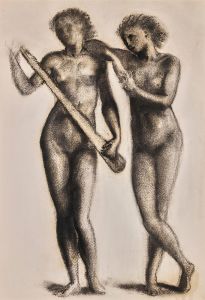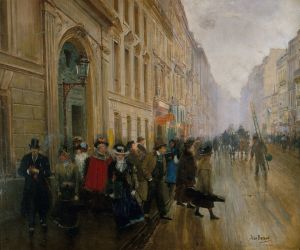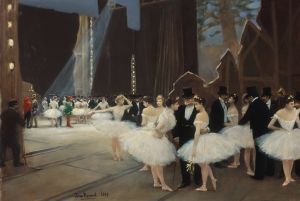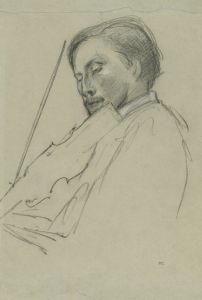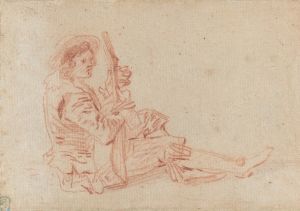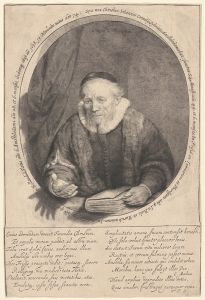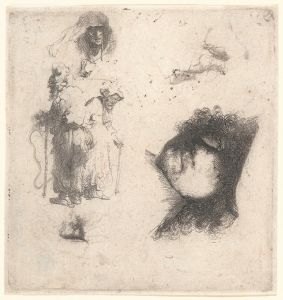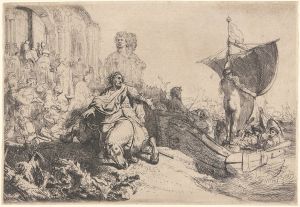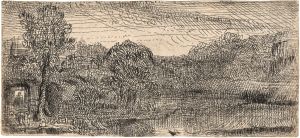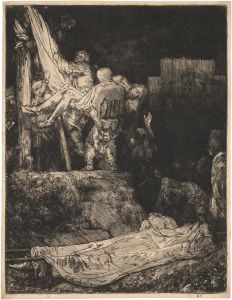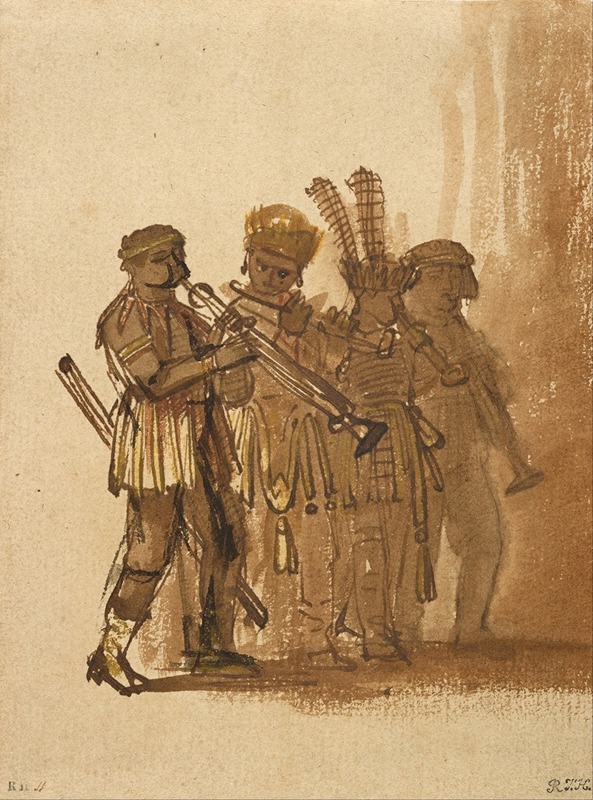
Four Musicians with Wind Instruments
A hand-painted replica of Rembrandt van Rijn’s masterpiece Four Musicians with Wind Instruments, meticulously crafted by professional artists to capture the true essence of the original. Each piece is created with museum-quality canvas and rare mineral pigments, carefully painted by experienced artists with delicate brushstrokes and rich, layered colors to perfectly recreate the texture of the original artwork. Unlike machine-printed reproductions, this hand-painted version brings the painting to life, infused with the artist’s emotions and skill in every stroke. Whether for personal collection or home decoration, it instantly elevates the artistic atmosphere of any space.
"Four Musicians with Wind Instruments" is a painting by the renowned Dutch artist Rembrandt van Rijn. Created in the early 17th century, this artwork is a fine example of Rembrandt's skill in capturing the essence of his subjects through detailed and expressive portraiture. The painting depicts four musicians, each playing a wind instrument, engaged in what appears to be a lively musical performance.
Rembrandt Harmenszoon van Rijn, commonly known as Rembrandt, was born on July 15, 1606, in Leiden, the Dutch Republic (now the Netherlands). He is widely considered one of the greatest visual artists in the history of art and the most important in Dutch art history. His contributions to art include a wide range of subjects, including portraits, landscapes, genre scenes, historical scenes, biblical and mythological themes, and self-portraits.
"Four Musicians with Wind Instruments" showcases Rembrandt's mastery of chiaroscuro, the use of strong contrasts between light and dark to achieve a sense of volume and three-dimensionality. This technique is evident in the way the light falls on the musicians' faces and instruments, creating a dramatic and engaging composition. The painting is also notable for its detailed rendering of the musicians' expressions and the textures of their clothing and instruments.
The musicians in the painting are depicted with a high level of individuality, each one absorbed in their performance. The wind instruments they play are depicted with great accuracy, reflecting Rembrandt's keen observation and attention to detail. The composition is dynamic, with the musicians arranged in a way that leads the viewer's eye around the painting, creating a sense of movement and interaction among the figures.
Rembrandt's ability to capture the human condition and the subtleties of expression is evident in this work. The painting not only highlights his technical prowess but also his deep understanding of human nature and the emotions that drive people. This ability to convey complex emotions and narratives through his art is one of the reasons Rembrandt remains a celebrated figure in the art world.
The exact date of the creation of "Four Musicians with Wind Instruments" is not definitively known, but it is generally believed to have been painted during the early part of Rembrandt's career, possibly in the 1620s or 1630s. This period was marked by his growing reputation as a talented artist and his move from Leiden to Amsterdam, where he would achieve great success and produce some of his most famous works.
As with many of Rembrandt's works, "Four Musicians with Wind Instruments" has been studied and admired by art historians and enthusiasts alike. It provides valuable insight into the artist's development and his approach to composition, light, and human expression. The painting is part of the rich legacy Rembrandt left behind, influencing countless artists and continuing to captivate audiences centuries after its creation.
In summary, "Four Musicians with Wind Instruments" is a testament to Rembrandt's extraordinary talent and his ability to bring his subjects to life with remarkable realism and emotional depth. The painting remains an important piece in the study of Rembrandt's oeuvre and the broader context of Dutch Golden Age painting.





